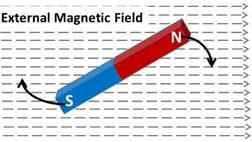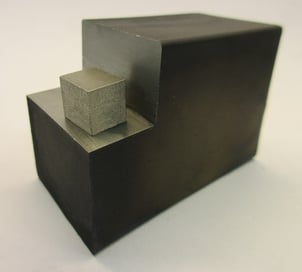What is Magnetic Moment?

If a magnet is placed in an external magnetic field, it will experience a torque as shown in Figure 1 (to the left). The magnitude of the torque depends on the orientation of the magnet with respect to the external magnetic field.
Magnetic dipole moment, often simply called magnetic moment, is a measurement of a magnetic dipole’s ability to turn itself into alignment with a given external magnetic field. The magnitude of the magnetic moment is defined as the maximum torque experienced by the magnet when placed in an external magnetic field.
Why is Magnetic Moment Testing Important?

The base method for the characterization of permanent magnets involves using a specialized piece of equipment called a Hysteresigraph (also known as Permeameter) to generate a BH curve or hysteresis loop.
The second quadrant of the hysteresis loop is commonly referred to as the demagnetization curve. Residual induction, Br, coercivity, Hc, intrinsic coercivity, Hci, and maximum energy product, (BH)max, can be obtained from demagnetization curves, which can then be compared back to product specifications for conformance.
Unfortunately, this testing is destructive and not appropriate for the final inspection of actual parts. Generating a BH curve using a Hysteresigraph normally requires a standard magnet sample with predetermined dimensions as shown in Figure 2 (to the right). So, what options do customers have for the final inspection of finished magnets to ensure each part meets requirements?


